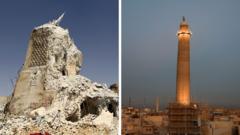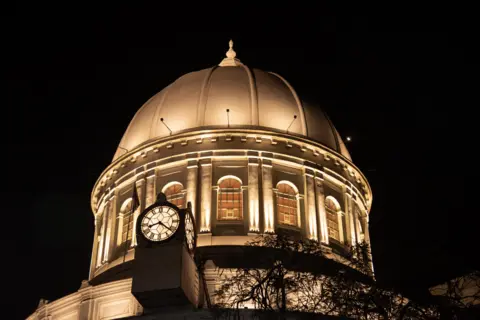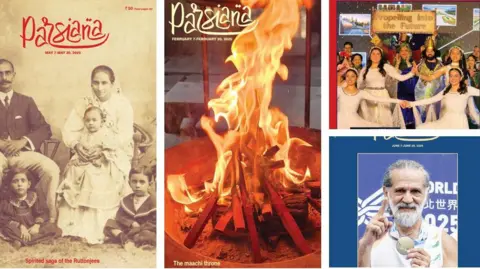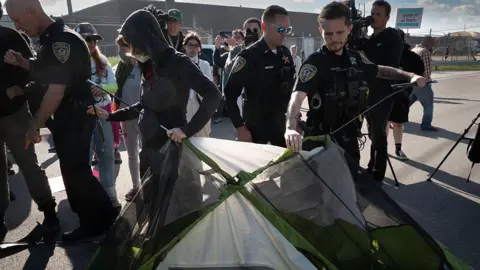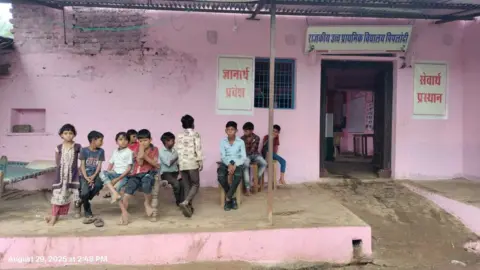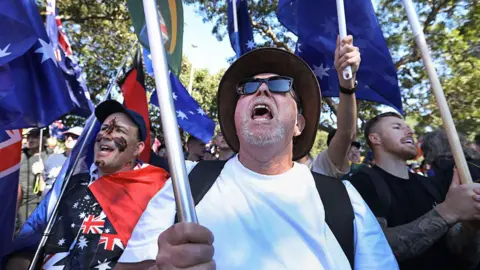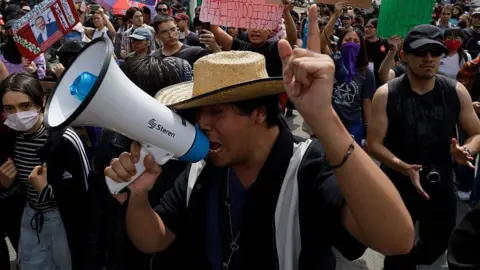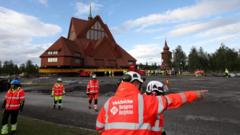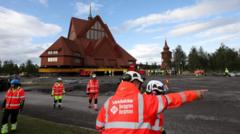In the wake of devastation caused by the Islamic State (IS) group, historic landmarks in Mosul, Iraq, are experiencing a renaissance with their reopening, marking a significant chapter in the city's recovery. This initiative, spearheaded by UNESCO, commenced a year after the city was liberated in 2017. To commemorate the occasion, UNESCO’s director-general Audrey Azoulay and Iraqi Prime Minister Mohammed Shia' al-Sudani will attend a ceremony alongside local artisans, residents, and representatives from various religious communities.
Once a beacon of religious and ethnic tolerance, Mosul fell under IS's brutal rule in 2014, leading to widespread violence and destruction. The city was liberated after intense military operations by a US-backed coalition, but the aftermath was grim. Photographer Ali al-Baroodi recalls his haunting first return in 2017 - a desolate landscape devoid of life, with the iconic al-Hadba minaret, a historical symbol of Mosul, reduced to ruins.
Recent reports indicate that over 80% of Mosul’s Old City was damaged during the three-year occupation, necessitating a monumental reconstruction effort, not only to repair buildings but also to restore the community's spirit. With a budget of $115 million sourced from international donors, including the UAE and the EU, UNESCO began the extensive rebuilding process.
Father Olivier Poquillon has been pivotal in overseeing the restoration of the convent of Notre-Dame de l'Heure, which faced significant damage under IS rule. He emphasizes the importance of healing community ties as essential to rebuilding. “Reconstructing the walls alone is futile if trust is not rebuilt,” he stated. This collaborative spirit has become a hallmark of the restoration effort.
Maria Rita Acetoso, the chief architect leading the project, underscores the broader impact of cultural restoration on community well-being. Her team has successfully trained over 1,300 local youth in traditional crafts and created roughly 6,000 new jobs, rejuvenating the local economy.
As Mosul’s ancient churches and mosques receive new life, the bells of Al-Tahera Church ring out once again, offering a powerful symbol of renewed hope. Residents like Mustafa and Abdullah express deep emotions upon returning to their revitalized homes, cherished since the 19th century.
While the scars from the past remain visible, the revival of Mosul's historic landmarks represents a beacon of hope. Ali al-Baroodi eloquently describes the transformation, likening it to witnessing a beloved city rise from the dead, revitalizing its rich tapestry of culture and community. This restoration not only honors Mosul's history but also prepares it for a brighter future.
Once a beacon of religious and ethnic tolerance, Mosul fell under IS's brutal rule in 2014, leading to widespread violence and destruction. The city was liberated after intense military operations by a US-backed coalition, but the aftermath was grim. Photographer Ali al-Baroodi recalls his haunting first return in 2017 - a desolate landscape devoid of life, with the iconic al-Hadba minaret, a historical symbol of Mosul, reduced to ruins.
Recent reports indicate that over 80% of Mosul’s Old City was damaged during the three-year occupation, necessitating a monumental reconstruction effort, not only to repair buildings but also to restore the community's spirit. With a budget of $115 million sourced from international donors, including the UAE and the EU, UNESCO began the extensive rebuilding process.
Father Olivier Poquillon has been pivotal in overseeing the restoration of the convent of Notre-Dame de l'Heure, which faced significant damage under IS rule. He emphasizes the importance of healing community ties as essential to rebuilding. “Reconstructing the walls alone is futile if trust is not rebuilt,” he stated. This collaborative spirit has become a hallmark of the restoration effort.
Maria Rita Acetoso, the chief architect leading the project, underscores the broader impact of cultural restoration on community well-being. Her team has successfully trained over 1,300 local youth in traditional crafts and created roughly 6,000 new jobs, rejuvenating the local economy.
As Mosul’s ancient churches and mosques receive new life, the bells of Al-Tahera Church ring out once again, offering a powerful symbol of renewed hope. Residents like Mustafa and Abdullah express deep emotions upon returning to their revitalized homes, cherished since the 19th century.
While the scars from the past remain visible, the revival of Mosul's historic landmarks represents a beacon of hope. Ali al-Baroodi eloquently describes the transformation, likening it to witnessing a beloved city rise from the dead, revitalizing its rich tapestry of culture and community. This restoration not only honors Mosul's history but also prepares it for a brighter future.

